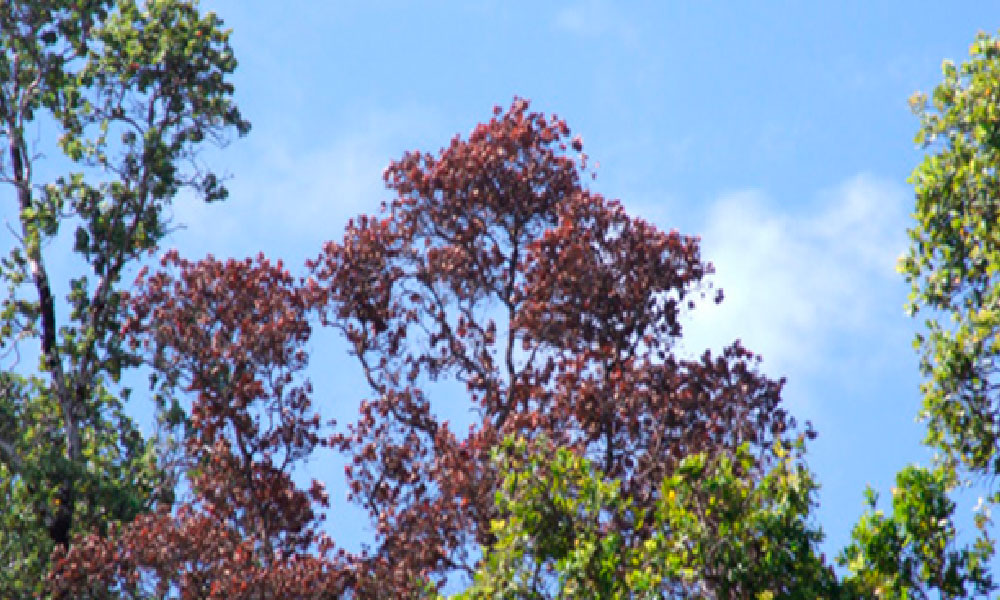With Ōhiʻa making up almost 80% of Hawaii’s native forests, this fungal disease may take down a broad range of the Hawaiian forests.
What is it?
Ōhiʻa lehua , is an endemic, pioneering tree species. Ōhiʻa can be found at elevations from sea level to greater than 9,000 ft. A new disease of Ōhiʻa was discovered in 2013. Rapid Ōhiʻa Death is a disease caused by two fungal pathogens.
Both of these fungal pathogens can kill Ōhiʻa.
Potential Treatment
Until recently, the only effective treatment available for protecting high-value oaks is high volume treatments of the systemic fungicide propiconazole diluted in high volume of water and injected into the lower stem or root flare of trees . The intent is to saturate the xylem tissue of the root collar with fungicide to prevent movement of the pathogen into the above ground area of the trees. lukuohia fungal infection spread within the Ōhiʻa host.
Field Testing
Jennifer Juzwik – Research Plant Pathologist with the USDA Forest Service, and Dr. Lisa Keith – Research Plant Pathologist with the USDA Agriculture Research Service.
Results
All trunk-injected Ōhiʻa trees were asymptomatic 2 month after trial initiation, indicating no natural or inoculation success. The two untreated trees that were inoculated did appear to show some Ōhiʻa wilt symptoms, but infection was not confirmed at that time. By 16 months post inoculation only one tree with fungi inoculation alone , five trees with Syngenta Experimental injection combined with fungi and three with Alamo with fungi had expressed some Ōhiʻa wilt symptoms .



























